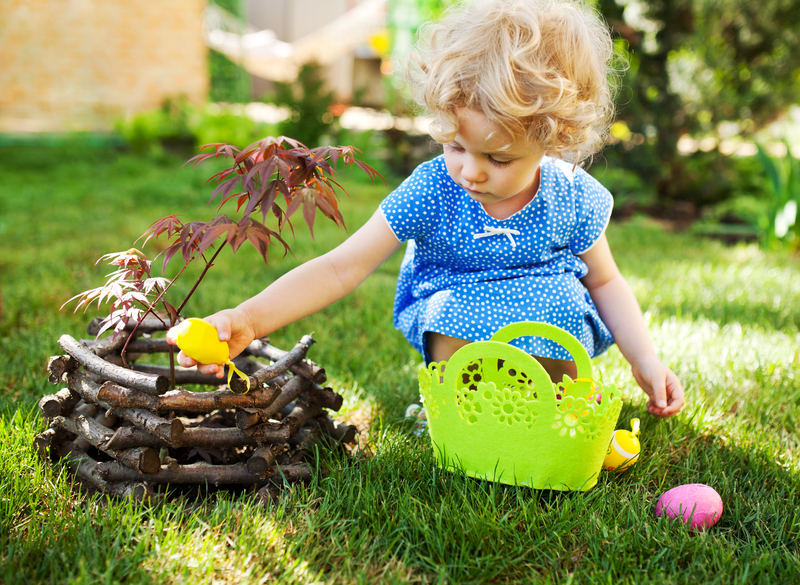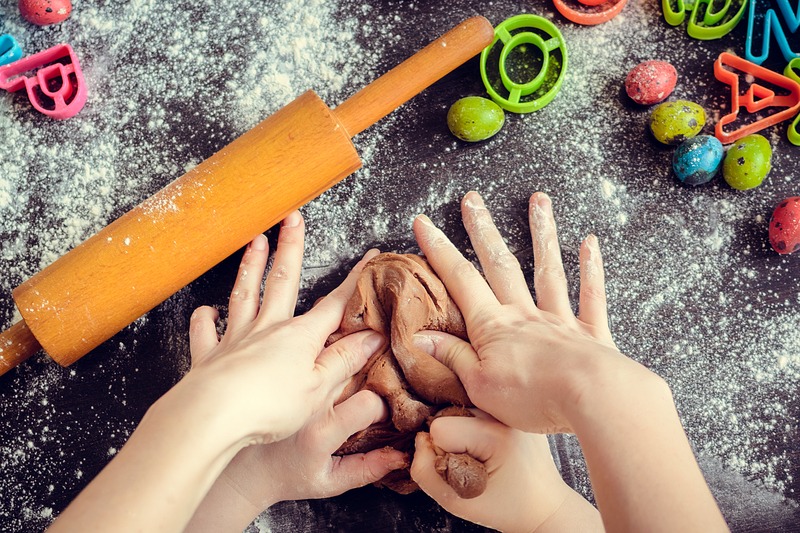The Ultimate Process for Carpet and Hard Floor Care
Posted on 28/06/2025
The Ultimate Process for Carpet and Hard Floor Care
Your floors are the foundation of any beautiful home or office. Whether you have plush carpets, polished hardwood, resilient vinyl, or elegant tile, maintaining floor hygiene and longevity requires a smart approach. This guide offers the ultimate process for carpet and hard floor care, detailing effective cleaning tactics, essential maintenance routines, and innovative solutions for all floor types. Dive in to discover how regular cleaning not only improves appearance but also extends the lifespan of your flooring investments.
Understanding Carpet and Hard Floor Care
The approach to floor care differs greatly between carpets and hard surfaces like wood, tile, and laminate. Each requires distinct techniques and products to maintain their best condition. Here's what you need to know about each type before starting any cleaning routine:
Why Proper Floor Care Matters
- Prolongs Floor Life: Consistent care prevents wear and tear, saving on replacement costs.
- Improves Indoor Air Quality: Clean floors help reduce allergens and dust.
- Enhances Appearance: Well-kept carpets and floors impress guests and add value.
- Prevents Mold and Bacteria: Effective cleaning halts the growth of harmful microbes.

Essential Tools and Products for Floor Maintenance
To keep both carpets and hard surfaces in top shape, equip yourself with the following tools:
- High-quality vacuum (with HEPA filter for carpets)
- Microfiber mops and cloths for hard floors
- pH-neutral cleaners for hardwood and laminate
- Rug shampoo machine or carpet extractor
- Stain removers formulated for specific flooring materials
- Soft-bristle brushes and scrubbing pads
- Steam cleaner (optional, for tile and tough stains)
Always choose cleaning products recommended by your flooring manufacturer to avoid unintentional damage.
The Ultimate Carpet Care Process: Step-by-Step
Carpets require specialized attention due to their ability to trap dirt, dust, and allergens deep within their fibers. Here are the best practices for carpet care and cleaning:
1. Regular Vacuuming
- Frequency: Vacuum heavy traffic areas daily and general spaces at least twice a week.
- Technique: Use slow, overlapping strokes, and pay extra attention to entryways and under furniture.
- Tip: Replace vacuum bags and filters regularly for optimal suction and allergy control.
2. Prompt Stain and Spill Management
Time is critical when it comes to spill cleanup. Follow this method:
- Blot spills immediately with a clean cloth--do not rub!
- Apply a suitable stain remover and gently blot from the outside towards the center of the stain.
- Rinse with water, then blot dry.
- For stubborn stains, a carpet cleaning machine may be necessary.
3. Deep Cleaning and Extraction
- Frequency: Professional cleaning is recommended every 12-18 months.
- DIY Options: Use a carpet shampooer or extractor for deep cleaning between professional visits.
- Opt for hot water extraction (steam cleaning) for the best results. Ensure adequate drying to prevent mold growth.
4. Deodorizing and Allergy Reduction
- Sprinkle baking soda over the carpet before vacuuming for odor control.
- Consider HEPA filters in both vacuums and air purifiers to trap allergens effectively.
5. Preventative Measures
- Use mats at entrances to reduce dirt tracked onto carpets.
- Establish a shoe-free home policy for extra protection.
- Rotate furniture occasionally to prevent matting and indentations.
The Ultimate Hard Floor Care Process for All Surfaces
Hard floors--including wood, tile, laminate, stone, and vinyl--require precise care to avoid scratches, dullness, and water damage. Here's how to keep your hard floors looking beautiful and lasting for years:
1. Sweeping and Dry Dusting
- Frequency: Sweep or dust-mop daily to remove grit and debris that cause scratches.
- Use microfiber mops for maximum dust pickup without abrasion.
2. Damp Mopping and Cleaning Solutions
- Clean floors weekly (or more often in busy areas) using a damp mop--not soaking wet.
- Choose a cleaner suited for your floor type (pH-neutral for wood/laminate, appropriate detergents for tile and stone).
- Avoid harsh chemicals or too much water for hardwood and laminate to prevent swelling, warping, or finish damage.
3. Deep Cleaning and Restoration
- Deep clean high-traffic areas monthly or as needed.
- Tile and grout may benefit from steam cleaning or scrubbing with specialized grout brushes.
- For waxed or finished floors, schedule periodic refinishing or sealing.
4. Protecting and Extending Floor Life
- Place felt pads under furniture legs to avert scratches.
- Use rugs or runners in entryways and hallways for high-traffic protection.
- Quickly clean spills to prevent staining or warping, especially on wooden floors.
- Maintain consistent humidity in the home to reduce floor expansion and contraction.
5. Specialized Care for Unique Hard Floors
- Hardwood: Use products labeled safe for wood. Avoid vinegar, ammonia, or abrasive cleaners.
- Laminate: Use as little water as possible--moisture is the enemy!
- Tile and Stone: Seal grout lines annually and use stone-safe pH-neutral cleaners.
- Vinyl: Never use abrasive pads or wax. Use gentle cleaners for shine and longevity.
Comparing Carpet Care vs. Hard Floor Care
- Carpet cleaning is focused on vacuuming, deep cleaning, and allergens removal.
- Hard floor cleaning emphasizes sweeping, careful mopping, and scratch prevention.
- Both require immediate spill responses and regular maintenance to retain their quality and safety.
Eco-Friendly Tips for Carpet and Floor Cleaning
For those seeking sustainable solutions to carpet and hard floor care:
- Opt for biodegradable, non-toxic cleaning products whenever possible.
- Use reusable microfiber cloths and mop heads to reduce waste.
- Consider investing in washable doormats and natural deodorizing agents like baking soda or vinegar (for suitable surfaces).
Seasonal Maintenance Checklist
Stay ahead of wear and environmental changes with a seasonal approach:
- Spring: Deep clean carpets and check for salt or mud residue on hard floors.
- Summer: Address increased pollen and dust; use air purifiers and entry mats.
- Autumn: Remove fallen leaves and debris promptly to prevent scratching or staining.
- Winter: Protect floors from salt, snow, and moisture carried in from outside.
Common Mistakes to Avoid in Floor Care
- Using the wrong cleaner (e.g., acidic products on marble or wood)
- Over-wetting carpets or wood floors--this risks mold or warping
- Skipping regular vacuum or sweep routines
- Neglecting professional maintenance when necessary
- Dragging heavy furniture without protective pads
Professional Services vs. DIY: What's Best?
While many carpet and floor care tasks can be handled at home, there are times when a professional cleaning service is invaluable. Professional equipment can extract deep-seated dirt and restore finishes beyond typical household capabilities. Assess your needs:
- Small stains and routine cleaning: DIY is usually sufficient.
- Large-scale stains, non-removable odors, or restoration: Call the experts.
- Schedule annual or bi-annual professional deep cleans for optimal results.

FAQs About Carpet and Hard Floor Care
- Can I use the same cleaner on carpets and hard floors?
Never use hard floor cleaners on carpets and vice versa. Always choose products specifically made for each surface. - How can I prevent floor damage from pets?
Clean litters and accidents quickly, trim pet nails regularly, and use area rugs in pet zones. - Is steam cleaning safe for all floor types?
Steam is ideal for tiles but should not be used on most hardwood or laminate floors, as moisture can cause warping.
Conclusion: Secure Long-Lasting Beauty and Hygiene
The ultimate process for carpet and hard floor care is about consistency, the correct techniques, and using the right products for each floor type. By following these expert guidelines, you'll extend the life of your floors, keep your living spaces clean and healthy, and maintain the value and elegance of your property. Remember: prevention and prompt response to spills, regular maintenance, and occasional professional help are the cornerstones of exceptional floor care.
For more in-depth tips, checklists, and product recommendations for comprehensive carpet and hard floor care, bookmark this guide and revisit it as your flooring needs evolve!




